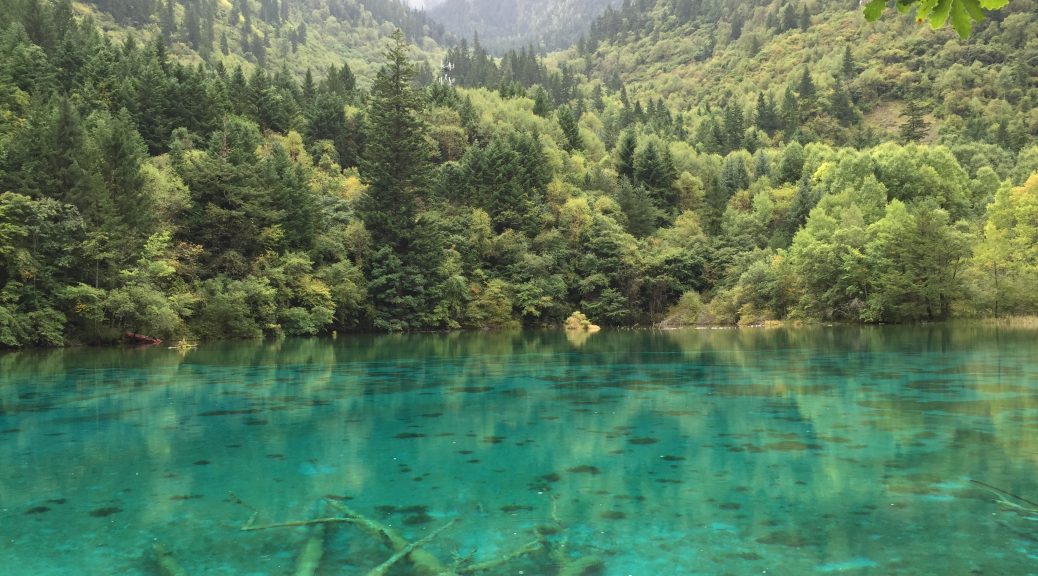20th September 2016 – 26th September 2016
Recently, my cousin and I visited Chengdu(成都), Huanglong(黄龙) and Jiuzhaigou(九寨沟).

Chengdu is a is the provincial capital of Sichuan province in Southwest China, that houses some 14 million inhabitants. Most parts of the city are modern, but there are also a few ancient places reserved for their historical significance.
Sichuan is famed for its hot and spicy food. I like hot and spicy food, so when we first went to a restaurant and ordered dishes and waitress asked ‘normal hotness?’ I replied with ‘yes’. But my cousin reminded me ‘you are in Sichuan’. And she was right. Despite the fact that we ordered ‘slightly spicy’ food, it was much hotter and spicier than I had expected.
The route to Huanglong(黄龙) & Jiuzhaigou(九寨沟) was through many tunnels. The road followed Min river(岷江). I was amazed to see many power transmission towers on tall mountains.
Huanglong is 3000 meters above sea level. So we were warned of altitude sickness. It wasn’t too bad for me, but there were a couple of people started throwing up while coach was traveling through the mountain region.
Huanglong was beautiful. We took the cable car up and walked down a couple of kilometres back to the entrance. I was constantly out of breath, most likely due to high altitude.
‘Jiuzhaigou(九寨沟) has a population density of 2000 people per square meter’, someone who has recently been there joked. Although it’s a bit exaggeration, there were a lot of tourists.
We spent a whole day there, walking some 20+ kilometres up and down the ‘Y’ shaped valleys. There were buses running up and down the same route, and we caught those a couple of times too.
Jiuzhaigou’s famed for its beautiful waters. The water displayed alluring colours because of the mineral and algae in the water.
This is ophiocordyceps sinensis, also know as insect plant (冬虫夏草).

I bought some on the way back. Insect plant is formed when fungi invades worm, and in China, it’s a herbal remedy. Apparently they only grow on tall mountains with altitude over 3000 meters.
On the road from Chengdu to Huanglong/Jiuzhaigou, we went past parts of the area worst affected by 2008 earthquake. Some of those towns were surrounded by tall mountains on all four sides with only one road going in and out of the place. Awe was how I felt.
Speaking of awesomeness, we have also had a day trip visiting Qingchengshan-Dujiangyan National Park (青城山-都江堰国家公园). Qingchengshan is famed for being one of the cradles for Tao religion and Dujiangyan is an irrigation system that was built some 2200 years ago. Dujiangyan divided river into two parts: inner river and outside river. The inner river is narrow but deep and the outer river is broad but shallow. Inner river is channelled into towns and farming area and the outer river is diverted away from civilization. During dry season, more water goes into the deep inner river while as during flooding, more water goes into broad outer river. Thus regardless of the weather, quantity of water into the town and farming area is regulated.
